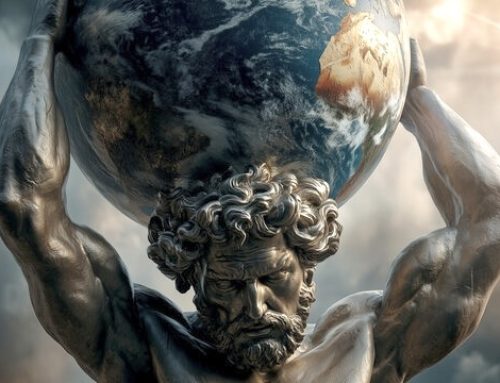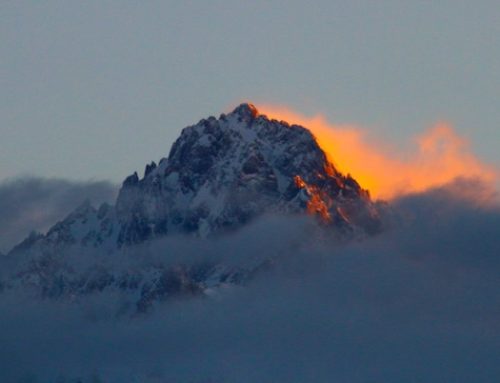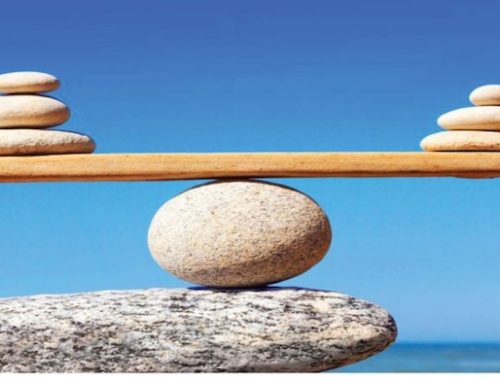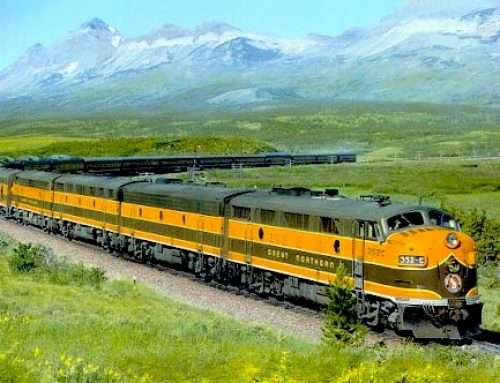When I last road-trip reported in May from my first extensive windshield-time since the onset of the pandemic (“Healing the Heart in the Heartland,” May 21), I had cruised through nine states in the Midwest—the American Heartland. For those who missed it, or have forgotten its message in the ether of a glorious summer, I observed that “What I found was a paradox of prosperity and fear; both inspiring and heartbreaking.” I also found “lovely people” who “treated me as nicely and respectfully over eleven days of travel in a very long time—perhaps ever.” I also noted they had “suffered what is the biggest con in the modern era: Trumpism” that had left them in a state of perpetual fear, principally of communism and transsexuals. Their hearts were wide open while their minds had been slammed shut.
I recently completed another trip, this time to the West where I was born and spent my formative years. From my home in Colorado through Utah, Nevada, Northern California, Oregon, Washington, Idaho, and back; seven states in eleven days. Given my history of living more than a third of my life there (albeit several years ago), I expected a similar if not higher level of comfort that I experienced in the Heartland during this autumnal excursion. That is not at all what I experienced. If the Midwest is a monolith of homogeneity, the West has become a perplexing and unsettling compote of heterogeneity. Translation: diverse and disparate bordering on unhinged. And, passionless for most things other than the self.
The beauty and intrigue are mostly still there, but the spirit of opportunism and reinvention—that had attracted fortune seekers to the Gold Rush of the mid-19th century, to the glamorous icons of the film and television industry of the mid-20th century, to the digital entrepreneurs of the late-20th and early-21st centuries—has been largely crushed under the weight of too many people, water rights fights, and a complete lack of cohesion around a values-based sense of common purpose. The great heritage of the West—that anything and everything was possible there—was nowhere in evidence, while its great cities are a depressing hollowed out version of their former selves. One young woman from Napa, California advised me to “stay out of our cities” on my road trip. I remember growing up in Seattle years ago thinking cities like Detroit, Philadelphia, and New York City were dangerous places to avoid; now Seattle, Portland, and San Francisco are cast in the same grim light. The mid-sized western towns and communities I visited retain their charm and a modicum-sense of community, but rural and urban areas left me bewildered—at times crestfallen.
I was expecting to be not only reconnected, but reinvigorated with the hope that the West could bail out America from its current malaise. Rather, I found a place profoundly different than the Heartland, but no more ready or willing to contribute to the renewal of the American spirit. Will America’s next leaders come from the West? Maybe, but my guess is probably not.
More specifically, the West remains younger and much more diverse racially, ethnically, politically, and religiously than any other part of America. It also embraces open-mindedness and tolerance unmatched throughout the rest of America. However, I observed an odd and discomfiting twist to these characteristics that defined an underlying paradox: while westerners value open-mindedness and tolerance, they practice it at a distance. They keep to themselves. Warmth and intimacy seemed to be considered inappropriate, perhaps even dangerous. The great irony is that the same warmth and intimacy that people in the Midwest and, even more so, the American South practice as foundational to their particular culture are accompanied there by close-mindedness and intolerance. It’s a head-scratcher. One would expect higher open-mindedness and tolerance would lead to higher civil intimacy, and lower to less intimacy, but the inverse appears to be so.
Perhaps it is the West’s historical subscription to its myth of rugged individualism and libertarian values—based in a sense of introverted humility—that requires a less friendly, more standoffish set of social practices, but I didn’t sense their reservation was born from humility. Not like the puritan Yankee New England reserved nature that has its roots in priggish humility; rather, a guarded sense that everyone and everything may be a threat at any time that suggests keeping one’s distance as a best practice. Unfortunately, this condition of detachment introduces a slippery-slope slide into what I call pinball syndrome: an unsettled state of fatalism—a passive resignation to gloom. Like the pinball that has no sense of agency, one just careens from one bumper to the next while fooling themselves that they are simply going with the flow when they are, in reality, sliding past the flailing flippers into a trough of forlorn indifference.
This syndrome is further supported by my next observation: when westerners talk about their concerns there are few common threads like in the Midwest where communism and transsexuals were nearly universally seen as the most imminent threats (thanks largely to Trump and FOX News). Instead, the world before the westerner is considered only in very personal terms—not in terms of community. Their fears mostly fall under the categories of political and security, but expressed as personal rights and personal security. They see themselves as living in the places they live, but not of the places they live. Again, I suspect this gives them a false sense of detached agency like a pinball that has convinced itself it is in control, or engaging willingly in the flow when, in fact, it is bouncing out of control. I observed this being further complicated by an odd and unhealthy mix of high entitlement and victimhood that is exploited very creatively and cynically by politicians like the congressperson from Washington, Pramila Jayapal. She deploys the same game as Trump—manipulation through fear—just at the other end of the political spectrum.
Like many Americans, westerners have grown wary of government and institutions. And their nature is to be less rooted and more restless; consistent with a population that has a high composition of immigrants from both out-of-country and from across the country. Westerners view the rest of America as disconnected from reality and woefully unenlightened—especially the federal government which routinely sends their eyeballs rolling up into the back of their heads—seen as both incompetent and irrelevant. I must also point out, however, that this shallow-rooted restlessness makes the West much more willing to accept change, which may be why it can be credibly characterized as the land of radical geniuses. Bill Gates, Paul Allen, Steve Jobs, Jeff Bezos, Elon Musk, Steven Spielberg and many others all either started there or wound up there due to the West’s culture of creativity and acceptance of pursuing technology-enabled altered states of being, establishing new multidimensional platforms of human activity from commerce to social media to artificial intelligence. Unfortunately, more recent radical geniuses include the biotech con-artist Elizabeth Holmes and crypto-conman Sam Bankman-Fried. Hopefully, they don’t become the new trendsetters of the West.
This condition of creative destruction and reconstruction excludes, however, the volcanic Trumpy intellectual potholes of Eastern Oregon and most all of Idaho (ex-Boise). Volcanic as in antediluvian, volatile, and toxic. At times, driving through these regions reminded me of the Appalachian Highway in West Virginia that while beautiful, also had a vibe of “keep driving.” It is no surprise Eastern Oregon is seeking to secede its state to join Idaho. Regressive isolated dullards exist in the West too. There were places in Northern California that also had that “keep driving” vibe, where people still promote a separate “State of Jefferson” to exit California.
To be both clear and fair, notwithstanding the Eastern Oregon/Idaho exception, the West has a significantly higher consciousness of the environment and the effects of climate change than the rest of the country. Nature also offers greater appeal in the West than most of our country to affect human engagement. Yet, westerners are still struggling to transition from climate-aware to actively committed. The “covenant of reciprocity” to reconnect humans and Nature advocated by botanist and author Robin Wall Kimmerer (Braiding Sweetgrass) remains an ambition. Most practice a performative mode of activism, which is to say for appearances rather than effect. They are advocating but not activating. Social media posts seem sufficient for many—especially millennials. But I registered a much greater sense of urgency among younger Gen Z folks. This may not generalize to the rest of the country, but I suspect millennials may fall into the same relatively irrelevant generational category of the Silent Generation that came between the Greatest Generation and Baby Boomers. The next great generation may well be Gen Z. Millennials take note: you now outnumber Boomers. Being in the long shadow of Boomers is no longer a valid excuse to sit on your hands, although Gen Z may seize political control soon anyway. Your choice!
A final note on a condition that seems to be plaguing the West more than other regions of the country and that is the tourist-ification of nearly everywhere, which has gone into hyperdrive since the pandemic. State and national parks have been hammered by humanity. Tourists are both a blessing and a curse. I will argue here that the tourist-ification of the West is similar in terms of consequence to the industrialization of the East in the late 19th and early 20th centuries. Some western towns are so dominated by tourism and/or in the case of ski towns, a ski resort company, that they are beginning to take on the characteristics of the Andrew Carnegie steel towns of the late 19th century. Integrated dependencies within local economies do create strength, but such dependencies can also turn into vulnerabilities if the dominant industry or a large company falters. The reality is that tourism, like the years-ago production of steel, is a dirty business. It has a high carbon footprint (fossil fuel-driven travel), imposes surge impacts on community infrastructure, provides mostly low-wage seasonal jobs, creates seemingly unsolvable housing issues, exacerbates income inequality issues, and subjects fulltime residents to the tourist persona of surly entitlement. In short, tourism is inherently unsustainable. I expect a backlash coming soon. The stress between fulltime locals, second homeowners, and tourists is at an all-time high. Policymakers from national to local need to start working on economic development alternatives to tourism sooner rather than later.
Western states are, like much of America, at a crossroads. The dream of the West has become nightmarish for many. I expect western states will either burst forward in a fit of genius innovation, or spiral entropically into collapse. A moderate midway regression to the mean seems improbable and profoundly out of character. As with the rest of the country, the next fifty years are full of uncertainty for the West. It may be my birthplace prejudice, but I bet—I hope—the West will find its footing soon and regain its prowess as a venue of innovation, opportunity, and inspiration.
Now, it’s time to start a fire in my wood stove. Winter has arrived in the Rockies with snow on my doorstep.






